Last week, my 7-year-old came home upset because his best friend had shared his “secret” with the whole class. As I watched him struggle with feelings of betrayal, I remembered a story my grandmother used to tell me about a monkey and a crocodile. By the time I finished the tale, my son understood exactly what had happened and why it hurt so much. That’s the magic of Panchatantra stories—they’ve been helping kids figure out life for over 1,500 years.
These stories are ancient—we’re talking over 1,500 years old—but they feel like they were written yesterday. Originally created for teaching three not-so-bright princes, these tales have survived because they actually work. They’re like having a wise grandparent who always knows exactly what to say, except the grandparent is a talking animal and somehow that makes everything click for kids.
You know that moment when your kid insists they “need” their friend’s new toy? That’s when “The Greedy Dog” becomes your best friend. When they’re ready to give up on something challenging, a persistent woodpecker shows them what’s possible. These aren’t just bedtime stories—they’re practical life guides disguised as entertainment.
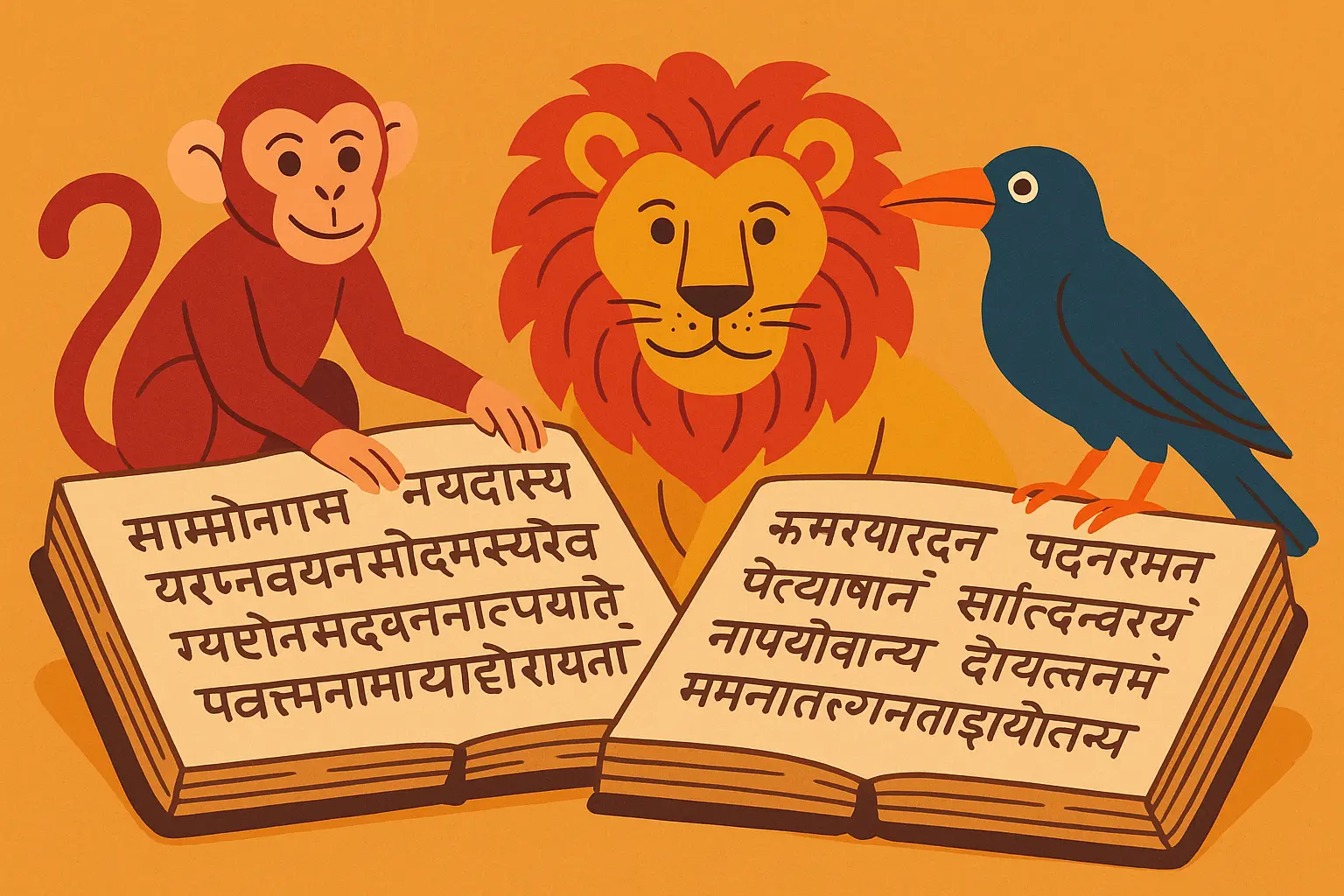
What You’ll Find Here
-
How to pick stories that actually fit your kid (not just their age)
-
25 stories organized by the life lessons they teach
-
Stories for when friends let you down
-
Tales that celebrate being clever over being strong
-
Stories about choices and what happens next
-
Adventures that build courage and grit
-
Lessons about telling the truth (even when it’s hard)
-
Tales that tackle pride and teach humility
-
Real examples of how these work in everyday situations
-
Honest talk about what doesn’t work
-
Simple ways to use these stories at home and school
-
How to blend old wisdom with new technology
The Bottom Line
Here’s what I’ve learned after years of using these stories: Age matters, but attention span matters more. Simple stories work best for younger kids—clear problem, clear solution, clear lesson. Older kids can handle the complex stuff with multiple characters and tricky moral situations. The best stories connect to problems your kid actually faces, not theoretical moral concepts. Most importantly, the magic happens in the conversation afterward, not during the story itself. And yes, sometimes you’ll pick the wrong story for the wrong moment—that’s totally normal.
How to Pick Stories That Actually Work for Your Kid
Choosing the right story is like picking the right sized bike—it needs to fit where your kid is right now, not where you think they should be. I used to make the mistake of choosing stories based on the lesson I wanted to teach instead of what my child was ready to hear. Big mistake. Here’s what actually works.
Match the Story to Your Kid’s Brain, Not Just Their Age
Your 5-year-old and your friend’s 5-year-old might be completely different when it comes to story complexity. Some kids can handle twisty plots with multiple characters, while others need straightforward cause-and-effect stories.
For younger kids (roughly 4-7), stick to stories where you can explain the lesson in one sentence. “The Greedy Dog” is perfect because it’s simple: dog wants more, dog loses everything. Done.
If you’ve ever watched your kid choose the biggest cookie only to drop it and end up with nothing, you’ve witnessed “The Greedy Dog” in real life. The lesson hits immediately because they’ve lived it.
|
What Works When |
Story Style |
Perfect Examples |
Red Flags |
|---|---|---|---|
|
Ages 4-7 |
One character, one problem, one lesson |
The Greedy Dog, The Wise Crow |
Multiple plotlines, abstract concepts |
|
Ages 8-10 |
Friend groups, teamwork, strategy |
The Four Friends, Monkey and Crocodile |
Heavy themes like death or deep betrayal |
|
Ages 11-12 |
Complex moral choices, peer pressure |
The Brahmin and Goat, Two Merchants |
Stories requiring extensive cultural explanation |
Older kids (8-12) are ready for the juicy stuff—friendship drama, strategic thinking, and moral dilemmas that don’t have easy answers. They can handle “The Four Friends and the Hunter” because they understand that different people bring different strengths to solve problems. These kids have been on group projects; they get it.
Pick Stories That Solve Real Problems
The best stories address stuff your kid actually deals with, not theoretical moral concepts that sound good to adults. “The Lying Shepherd Boy” works because every child has been tempted to lie for attention or to avoid getting in trouble. You don’t need to explain why lying is bad—the story shows them what happens.
Here’s my reality check: If you can’t think of three specific situations where your child would use this lesson, pick a different story.
When my daughter complained that math was “too hard” and wanted to give up, I told her about a little woodpecker who refused to quit pecking at a tree. She got it immediately because she’d felt that exact frustration. The story didn’t lecture her about persistence—it showed her what persistence looks like and why it matters.
Don’t Overthink the Cultural Stuff
Look, these stories come from ancient India, and that’s part of their beauty. But some stories require so much cultural explanation that you lose the kid’s attention before you get to the actual lesson.
“The Lion and the Mouse” works anywhere because friendship and kindness are universal. “The Brahmin and the Goat” is trickier because explaining social hierarchies to a 6-year-old might derail the whole point about peer pressure.
Fair warning: “The Brahmin and the Goat” sounds great in theory, but explaining what a brahmin is to a 5-year-old will completely derail the lesson. Trust me on this one.
Test the Entertainment Factor
If the story bores you, it’ll definitely bore your kid. The best Panchatantra tales have genuine suspense, characters you care about, and twists that surprise you. “The Monkey and the Crocodile” works because you’re genuinely worried about whether the friendship will survive and how the monkey will escape.
Some stories are just more exciting than others. “The Wise Crow” has a satisfying problem-solving element that keeps kids engaged. “The Four Friends and the Hunter” has action, teamwork, and a rescue mission. These aren’t just moral lessons—they’re genuinely good stories.
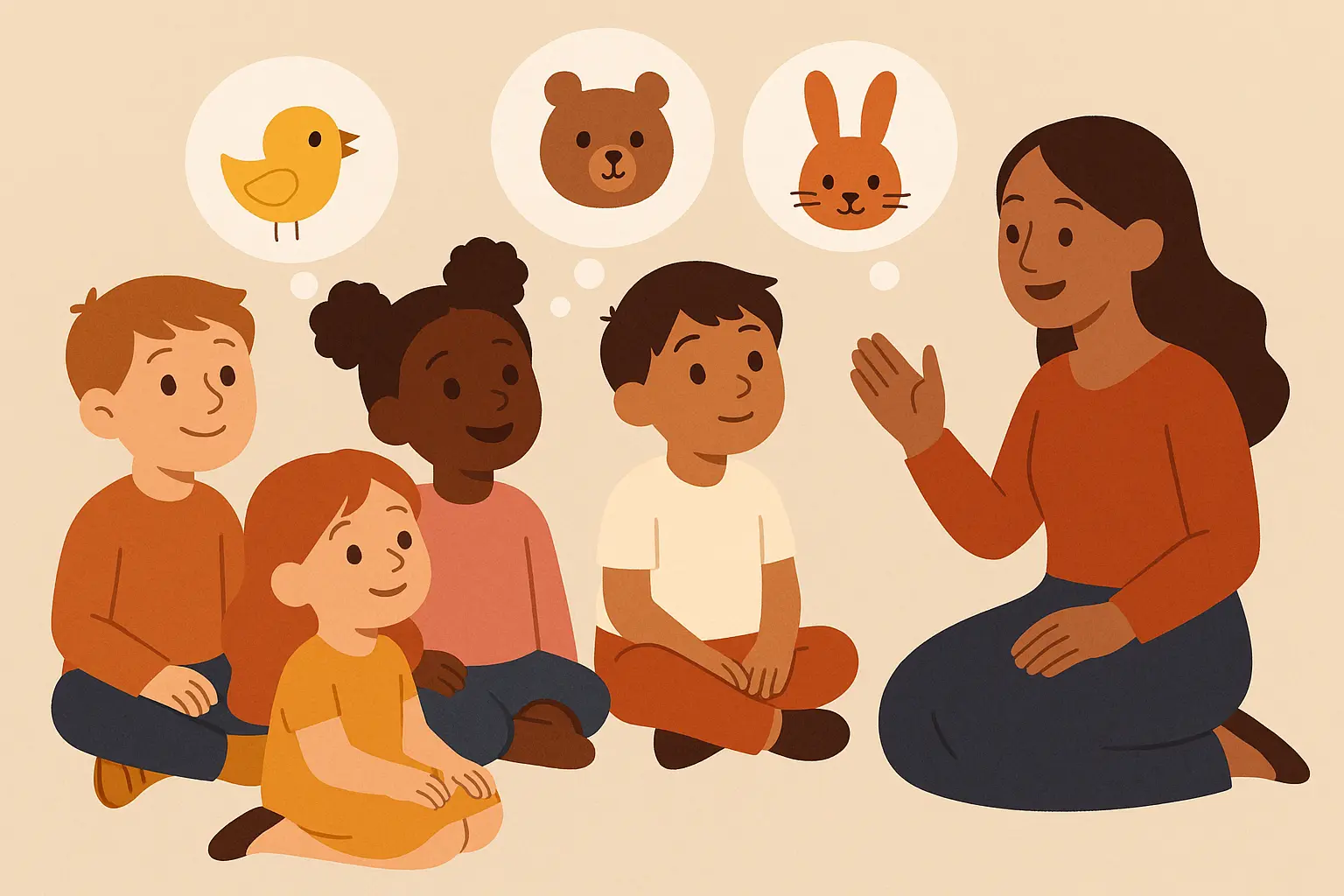
25 Stories That Actually Work, Organized by What They Fix
I’ve organized these by the problems they solve instead of fancy academic categories. Because let’s be honest—when your kid is melting down over a friendship issue, you need the right story fast, not a literature lesson.
|
When Your Kid Needs Help With |
Stories That Work |
Ages That Get It |
Best Used When |
|---|---|---|---|
|
Friend drama and betrayal |
5 friendship stories |
6-12 years |
After school conflicts, birthday party drama |
|
Problem-solving and thinking smart |
5 wisdom tales |
5-12 years |
Homework struggles, creative challenges |
|
Understanding consequences |
4 cause-and-effect stories |
4-10 years |
Before big decisions, after mistakes |
|
Building courage and grit |
4 perseverance adventures |
7-12 years |
When they want to quit something hard |
|
Honesty and trust issues |
4 truth-telling lessons |
5-12 years |
After lies are discovered, trust rebuilding |
|
Dealing with show-offs and bragging |
3 humility tales |
8-12 years |
Sports seasons, academic competition |
Stories for When Friends Let You Down
These five stories tackle the messy reality of childhood friendships—the betrayals, the loyalty tests, and figuring out who’s actually on your team. They’re perfect for those after-school meltdowns when someone didn’t save them a seat at lunch.
1. The Monkey and the Crocodile
Picture this: your kid has that one friend who comes over every day after school, eats all your snacks, and seems super nice. Then one day, that friend throws them under the bus to save themselves. Sound familiar? That’s exactly what happens to this poor monkey.
The monkey shares his best fruit with a crocodile every single day, building what seems like real friendship. But when the crocodile’s wife demands the monkey’s heart for dinner (yikes), the crocodile chooses family pressure over friendship loyalty. The betrayal stings because it comes from someone trusted.
Here’s the genius part: the monkey doesn’t just become a victim. He outsmarts the crocodile by pretending he left his heart back in the tree, tricks his way to safety, and leaves the crocodile to deal with the consequences of broken trust.
This story hits hard because betrayal by close friends feels devastating at any age. Kids learn to recognize when someone’s loyalty wavers and how to protect themselves without becoming cynical about friendship entirely.
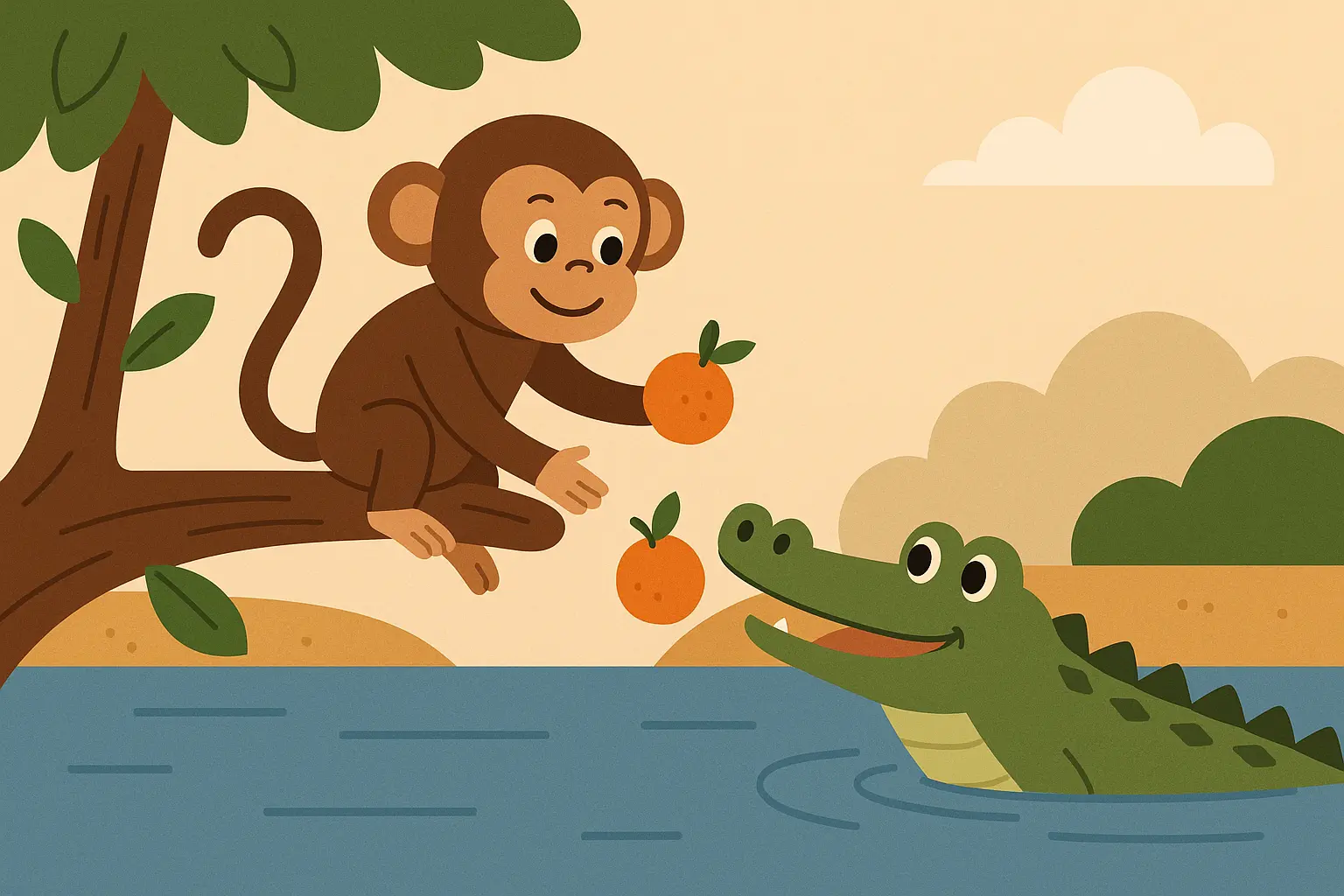
2. The Lion and the Mouse
This one’s perfect for addressing playground dynamics where kids dismiss others based on size, popularity, or social status. A tiny mouse accidentally wakes up a sleeping lion. Instead of squashing the little guy, the lion shows mercy and lets him go.
Later, when hunters trap the mighty lion in thick ropes, guess who shows up? That same little mouse gnaws through the bindings and saves the day. The lesson feels especially powerful because it challenges assumptions about who can help whom.
Every kid has been both the mouse (feeling small and powerless) and the lion (dismissing someone they thought couldn’t help them). The story works because it flips the power dynamic in a way that feels fair and satisfying.
3. The Four Friends and the Hunter
This is my go-to story for kids who struggle with group projects or feel like they don’t fit in. Four completely different animals—a deer, crow, mouse, and tortoise—become tight friends despite having nothing obvious in common.
When hunters capture the deer, each friend contributes their unique strengths to pull off a rescue mission. The crow provides aerial surveillance, the mouse gnaws through traps, and even the slow tortoise plays a crucial role in the escape plan.
The story works brilliantly for teaching that diverse friend groups accomplish more than groups where everyone’s the same. Kids see that the quiet, thoughtful friend is just as valuable as the fast, athletic friend. Everyone brings something important to the table.
4. The Elephant and the Sparrow
Perfect for kids dealing with bullying situations where size differences seem insurmountable. An elephant carelessly destroys a sparrow’s nest, killing her babies in the process. The grieving sparrow doesn’t just accept this tragedy—she gets help.
Through coordinated effort with other animals, they successfully hold the elephant accountable for his destructive actions. The story shows that seeking help from others isn’t weakness—it’s smart strategy when facing overwhelming opposition.
Kids learn that you don’t have to face bullies alone and that sometimes the system works when people band together for justice.
5. The Grateful Animals
This one teaches the long game of kindness. A compassionate man helps various animals throughout his life, never expecting anything in return. Years later, when he faces mortal danger, all the creatures he once helped return to save his life.
The story encourages helping others without keeping score while showing that good deeds often return in unexpected ways. It’s especially good for kids who complain that “being nice doesn’t pay off.”
Tales That Celebrate Being Clever Over Being Strong
These five stories are perfect for kids who feel physically outmatched or academically challenged. They show how intelligence, creativity, and strategic thinking can level playing fields that seem hopelessly uneven.
6. The Clever Rabbit and the Lion
A tyrannical lion terrorizes all the forest animals until one brave rabbit volunteers to face him. But instead of fighting directly (which would be suicide), the rabbit uses psychology. He convinces the lion that another lion (actually his own reflection in a well) is challenging his authority.
The enraged lion jumps into the well to fight his “rival” and drowns in his own arrogance. This story empowers kids who feel physically outmatched by bullies or intimidated by authority figures. It shows that understanding how people think can be more powerful than being bigger or stronger.
7. The Brahmin and the Goat
Fair warning: this one’s tricky for younger kids because of the cultural context, but it’s gold for older children dealing with peer pressure. Three thieves want to steal a brahmin’s valuable goat, so they devise a clever scheme.
Each thief separately approaches the brahmin, insisting he’s actually carrying a dog, not a goat. Confused by the repeated assertions from different people, the brahmin starts doubting his own eyes and eventually abandons the goat, believing he’s been carrying a worthless animal.
The story teaches kids about the power of repeated misinformation and peer pressure. It encourages trusting personal judgment even when multiple people insist otherwise—a crucial skill in our social media world where group think can override common sense.
8. The Wise Crow
This is probably the most famous problem-solving story ever, and for good reason. A desperately thirsty crow finds water in a narrow pitcher but can’t reach it with his beak. Instead of giving up, he systematically drops pebbles into the pitcher, gradually raising the water level until he can drink.
Perfect for kids struggling with homework, learning new skills, or facing any challenge that seems impossible at first glance. The story shows that obstacles often have solutions that aren’t immediately obvious, and that patient, systematic effort can overcome apparent impossibilities.
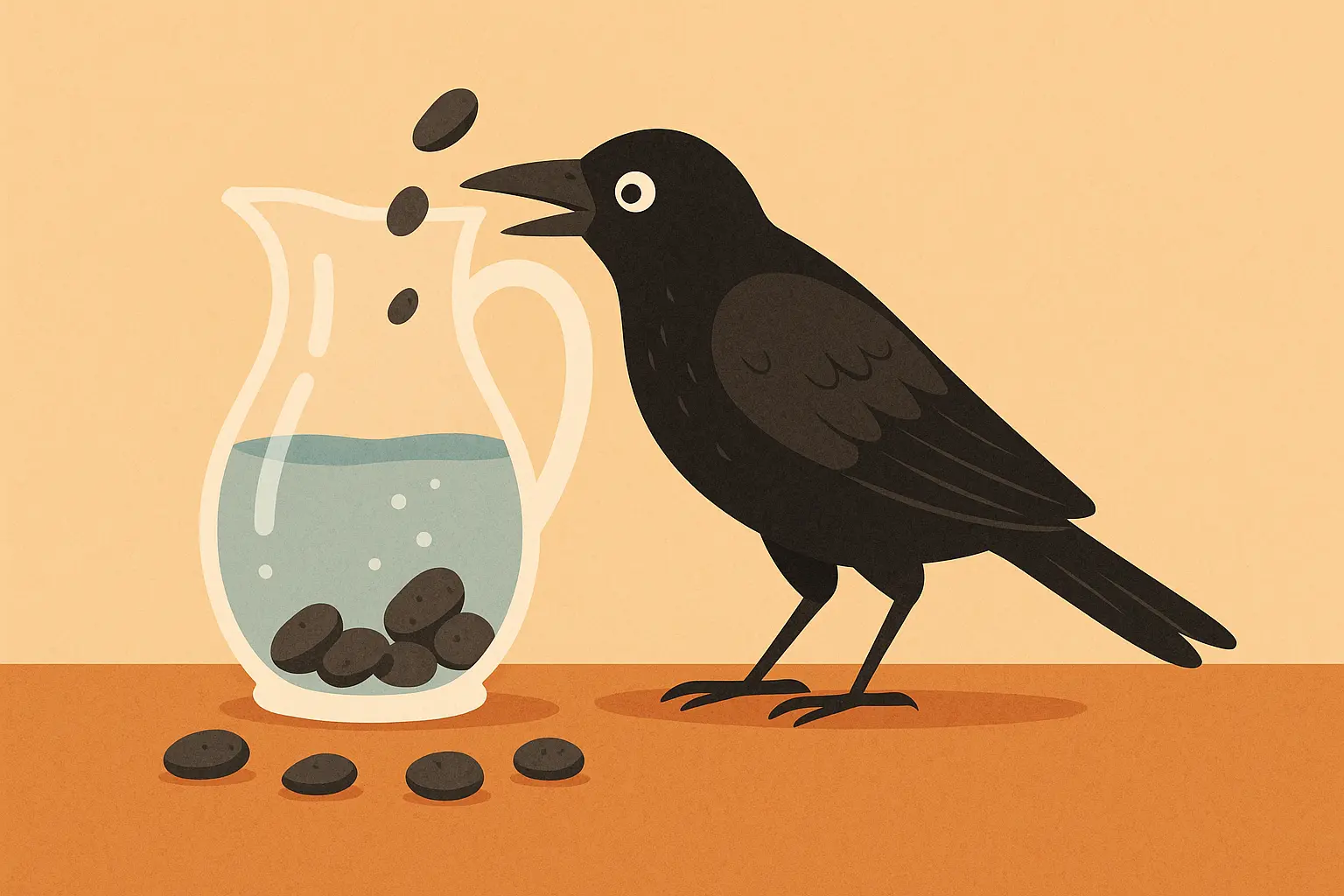
9. The Foolish Sage and the Jackal
This one’s great for kids who are book-smart but sometimes lack common sense. A learned sage demonstrates his magical powers by bringing a dead jackal back to life. Despite warnings from others about the creature’s dangerous nature, the sage ignores their concerns because he’s proud of his abilities.
The revived jackal immediately attacks him, proving that knowledge without wisdom can create dangerous situations. The story addresses the difference between being smart and being wise, and teaches that intelligence should be tempered with common sense.
10. The Clever Merchant
When thieves capture a traveling merchant planning to rob and kill him, he doesn’t panic. Instead, he convinces them he possesses magical powers, demonstrating “magic” through clever tricks and confident presentation. The superstitious thieves become so frightened they release him and flee.
This story shows kids how confidence and creativity can overcome seemingly hopeless situations. It demonstrates that thinking quickly under pressure and understanding human psychology can be more powerful than physical strength.
Stories About Choices and What Happens Next
These four stories focus on the direct relationship between decisions and consequences. They’re perfect for kids who need to understand that actions have results, often in ways they didn’t expect.
11. The Greedy Dog
This story delivers its lesson with brutal efficiency, which is exactly why kids remember it forever. A hungry dog finds a delicious bone and carries it proudly across a bridge. Seeing his reflection in the water below, he mistakes it for another dog with an even bigger bone.
Opening his mouth to bark at the “competitor,” he drops his own bone into the water and loses everything.
If you’ve ever watched your kid choose the biggest cookie only to drop it and end up with nothing, you’ve witnessed “The Greedy Dog” in real life. The visual nature makes it unforgettable—perfect for addressing materialism and that constant “I want what they have” mentality.
I use this story whenever my kids start complaining about their allowance while eyeing their friends’ bigger allowances, or when they want to trade their perfectly good bike for something shinier.
12. The Tortoise and the Two Swans
We’ve all had that kid who won’t stop talking during story time—that’s your tortoise right there. Two swans offer to carry a chatty tortoise to a beautiful lake, but they warn him repeatedly to stay silent during the flight.
Unable to control his need to respond to comments from people below, the tortoise opens his mouth mid-flight and falls to his death. It’s harsh, but the lesson about following instructions and controlling impulses hits home for kids who struggle with listening to authority figures.
This story works especially well for children who talk compulsively in inappropriate situations—during tests, in movie theaters, or when they’re supposed to be listening.
13. The Farmer and the Snake
Some of these stories are heavy. Don’t spring “The Farmer and the Snake” on a sensitive kid right before bedtime—trust me on this one. A kind farmer finds a snake freezing in the cold and takes pity, warming it against his chest. Once revived, the snake immediately bites its rescuer, explaining that biting is simply its nature.
This complex story addresses the difficult lesson that kindness should be balanced with wisdom. Kids learn to help others while protecting themselves from those who might exploit their generosity. It’s tough but necessary for children who are naturally trusting.
14. The Mice That Ate Iron
This one’s perfect for kids who think lying will solve their problems. A merchant leaves iron scales with a friend before traveling, asking him to safeguard them. When he returns, the friend claims mice ate the iron—an obvious lie since mice don’t eat metal.
The merchant retaliates by kidnapping the friend’s son, then claims a hawk carried the boy away. Both men eventually admit their dishonesty and return what they’ve taken. The story demonstrates how dishonesty creates escalating conflicts that hurt everyone involved.
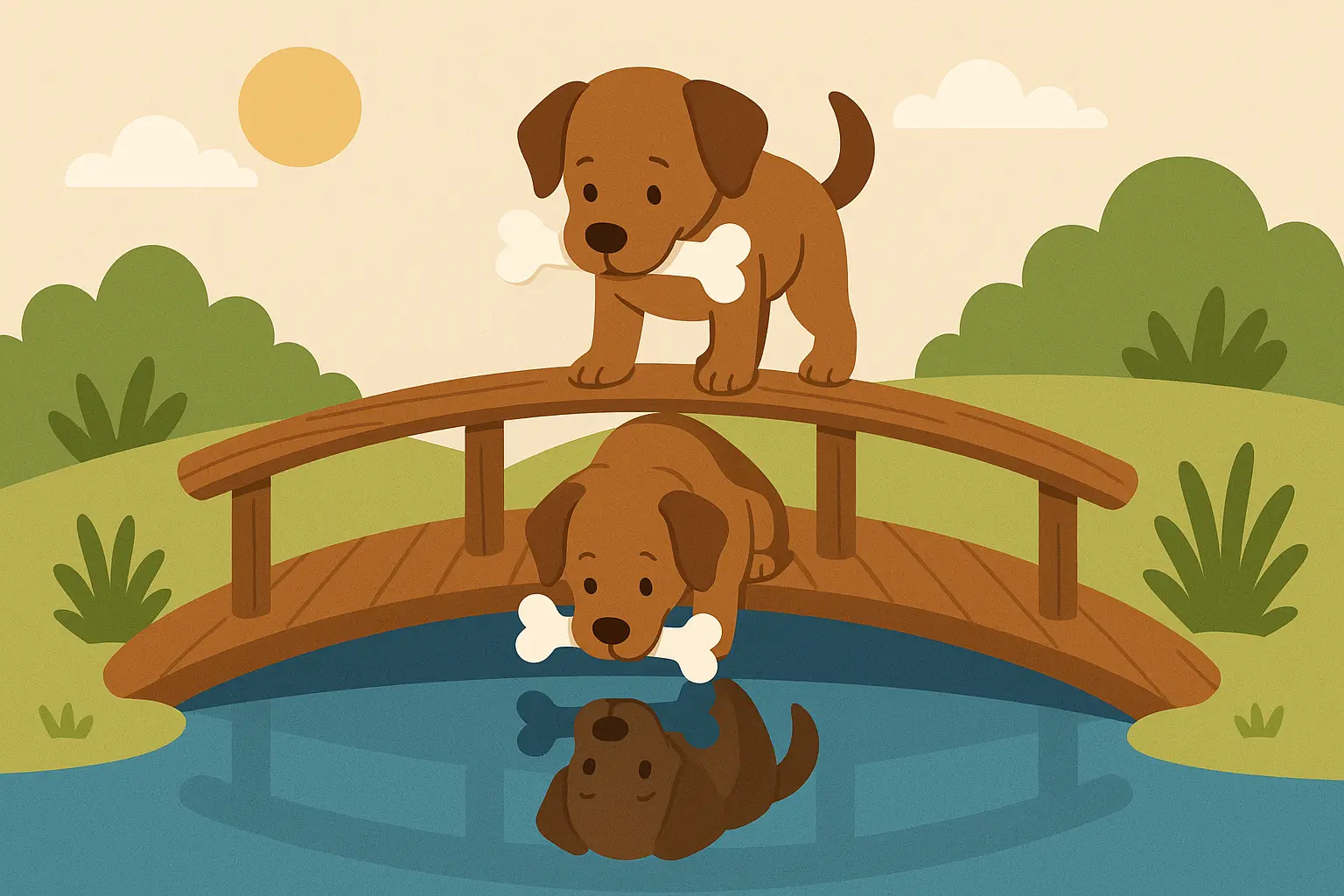
Adventures That Build Courage and Grit
These four stories are for when your kid wants to quit piano lessons, give up on math, or avoid trying anything that might be difficult. They celebrate determination and show that courage isn’t the absence of fear—it’s doing what needs to be done despite being scared.
15. The Little Mouse and the Big Cat
Perfect for kids facing bullying or feeling overwhelmed by bigger challenges. A small mouse repeatedly outsmarts a much larger cat through courage, quick thinking, and refusal to give up. Despite the obvious size disadvantage, the mouse uses intelligence and determination to not just survive, but thrive.
The story proves that size and strength don’t determine outcomes—courage and cleverness do. It’s especially powerful for smaller kids who feel intimidated by bigger classmates or older siblings.
16. The Ant and the Grasshopper
You know that child who brags about being the fastest runner until they actually have to prove it? This story is the reality check they need. While the grasshopper spends summer playing and making music, the ant works diligently storing food for winter.
When cold weather arrives, the prepared ant survives comfortably while the unprepared grasshopper faces starvation. The story connects directly to homework habits, chores, and long-term planning. Kids see the concrete benefits of doing unpleasant tasks now to avoid bigger problems later.
I use this one constantly during homework battles: “Remember the ant and grasshopper when you’re deciding whether to do math now or play video games first.”
17. The Persistent Woodpecker
A determined woodpecker works tirelessly to create a hole in a tree, ignoring mockery from other birds who claim the task is impossible. Through consistent daily effort, the woodpecker eventually succeeds, proving that persistence overcomes seemingly insurmountable obstacles.
I tried using “The Persistent Woodpecker” when my son was having a piano meltdown. He looked at me and said, “Mom, I’m not a bird.” Fair point, kid. Sometimes you’ll pick the wrong story for the wrong moment—it happens.
18. The Brave Little Sparrow
When a mighty eagle threatens her nest, a small sparrow refuses to back down despite the obvious size disadvantage. Using clever tactics and unwavering determination, she successfully protects what matters most to her.
This story teaches kids to stand up for family and important values even when facing overwhelming opposition. It emphasizes that protecting others can give us courage we didn’t know we possessed.

Lessons About Telling the Truth (Even When It’s Hard)
These four stories tackle honesty in ways that don’t feel preachy. They show kids that truthfulness creates opportunities while dishonesty destroys trust and creates problems that are way harder to fix than the original issue.
19. The Honest Woodcutter
When a woodcutter accidentally drops his iron axe into a river, a river spirit appears offering him gold and silver axes instead. The woodcutter honestly admits these aren’t his and asks only for his original tool. Impressed by his integrity, the spirit rewards him with all three axes.
This story makes integrity feel valuable rather than burdensome. Kids see that honesty often brings unexpected rewards while learning to resist temptation when no one is watching.
20. The Lying Shepherd Boy
Every child understands this story because every child has been tempted to lie for attention or to avoid consequences. A bored shepherd boy repeatedly cries “wolf” to get attention from villagers, laughing when they rush to help unnecessarily.
When a real wolf finally appears and threatens his sheep, no one believes his genuine cries for help, and he loses his entire flock. The lesson feels inevitable rather than preachy—natural consequences teach better than lectures.
If you’ve ever dealt with a kid who lies about brushing their teeth, then cries when they get cavities, the lying shepherd boy will hit close to home.
21. The Two Merchants
Two merchants travel together on a dangerous journey, one committed to honesty and the other willing to lie and cheat for profit. Through various trials and challenges, the honest merchant’s integrity consistently leads to better outcomes while the dishonest merchant faces increasingly serious consequences.
The story demonstrates how character affects long-term success in business and relationships. Kids see that shortcuts through dishonesty create more problems than they solve.
22. The Truthful Prince
A prince faces a situation where lying would save his kingdom from immediate danger, but he refuses to compromise his commitment to truth. His unwavering honesty ultimately brings unexpected solutions and earns respect from everyone around him.
This one’s heavy for younger kids, but older children can understand that integrity sometimes requires difficult choices and that staying true to values creates better outcomes than compromising principles for short-term gains.
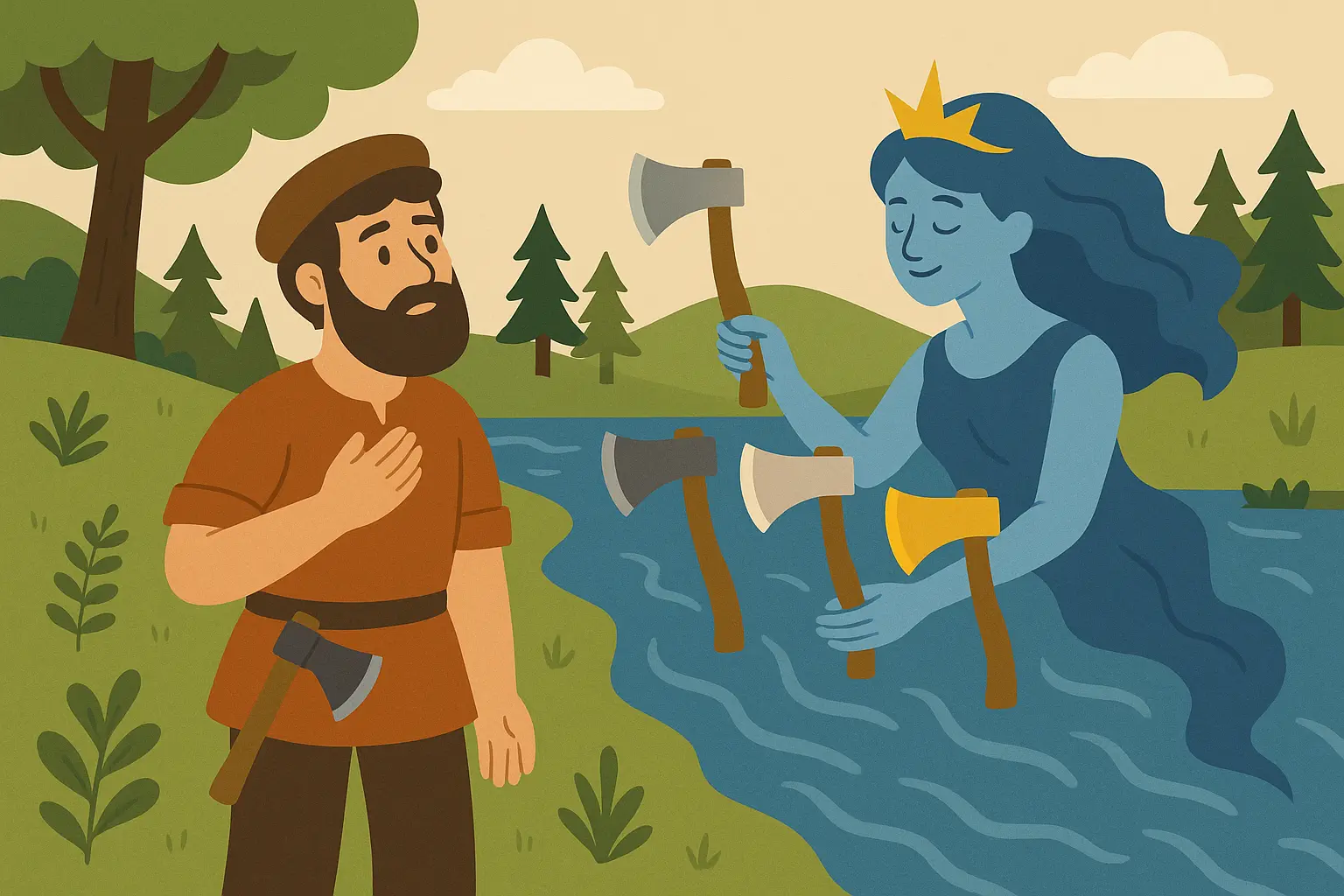
Tales That Tackle Pride and Teach Humility
These three stories are perfect for sports seasons, academic competition, or anytime your kid starts thinking they’re better than everyone else. They show how arrogance can literally weigh you down while humility keeps you flexible and strong.
23. The Proud Peacock
A beautiful peacock constantly mocks other birds for their plain appearance, believing his stunning feathers make him superior. When a fierce storm threatens the forest, his vanity prevents him from flying to safety—his elaborate tail feathers are too heavy for quick escape. Meanwhile, the “plain” birds he ridiculed easily fly to shelter.
Perfect for kids who judge others based on appearance or who think natural gifts make them better than everyone else. The story shows how arrogance can literally weigh you down when you need to adapt quickly.
24. The Boastful Hare
You know that kid who brags about being the fastest runner until they actually have to prove it? Meet the boastful hare. He constantly brags about his incredible speed, claiming no animal can match his abilities. When challenged to race a tortoise, he becomes so overconfident that he takes a nap mid-race.
The steady tortoise passes the sleeping hare and wins the competition. Perfect for addressing academic or athletic competition where natural talent meets disciplined effort. Kids learn that consistent work beats raw ability when that ability isn’t paired with dedication.
25. The Arrogant Tree
A tall, mighty tree looks down on smaller plants, boasting about its impressive height and strength. When a violent storm hits the forest, the rigid tree breaks under pressure while the flexible grass and smaller plants bend and survive by adapting to the wind.
This story teaches that flexibility and adaptability are often more valuable than appearing strong or impressive. True strength sometimes means knowing when to bend rather than trying to stand rigid against overwhelming forces.
Real Stories from Real Parents: What Actually Works
Let me share some honest examples of how these stories play out in real life—the successes, the failures, and the “well, that didn’t go as planned” moments.
When Simple Stories Hit Different
The Rodriguez family uses “The Four Friends and the Hunter” during their weekly family meetings. When 10-year-old Carlos struggled with his science fair project, his parents helped him identify different family strengths: Dad’s research skills, Mom’s artistic abilities, sister Ana’s presentation talents, and Carlos’s own scientific curiosity. By working together like the four friends, they created a winning project.
But here’s what they didn’t expect: Carlos started applying this thinking to playground conflicts, helping kids figure out how their different strengths could solve problems instead of fighting about who was “best” at something.
When Stories Backfire Spectacularly
Third-grade teacher Mrs. Johnson thought “The Greedy Dog” would be perfect during lunch period when students complained about their meals while eyeing classmates’ food. She asked students to predict what would happen if they kept trading lunch items, seeking something better each time.
The lesson worked too well. Students became so worried about losing their food that they stopped sharing entirely, even with friends who forgot their lunch. Sometimes the pendulum swings too far in the other direction.
The “Been There” Moments That Actually Connect
When 8-year-old Maya complained that homework was too hard and wanted to skip it to play video games, her mother referenced “The Ant and the Grasshopper.” Instead of lecturing about responsibility, she asked Maya to predict what would happen if the grasshopper approach continued through the school year.
Maya immediately understood the connection and chose to complete assignments first. The decision felt like her own rather than forced compliance, which made all the difference in her attitude toward homework going forward.
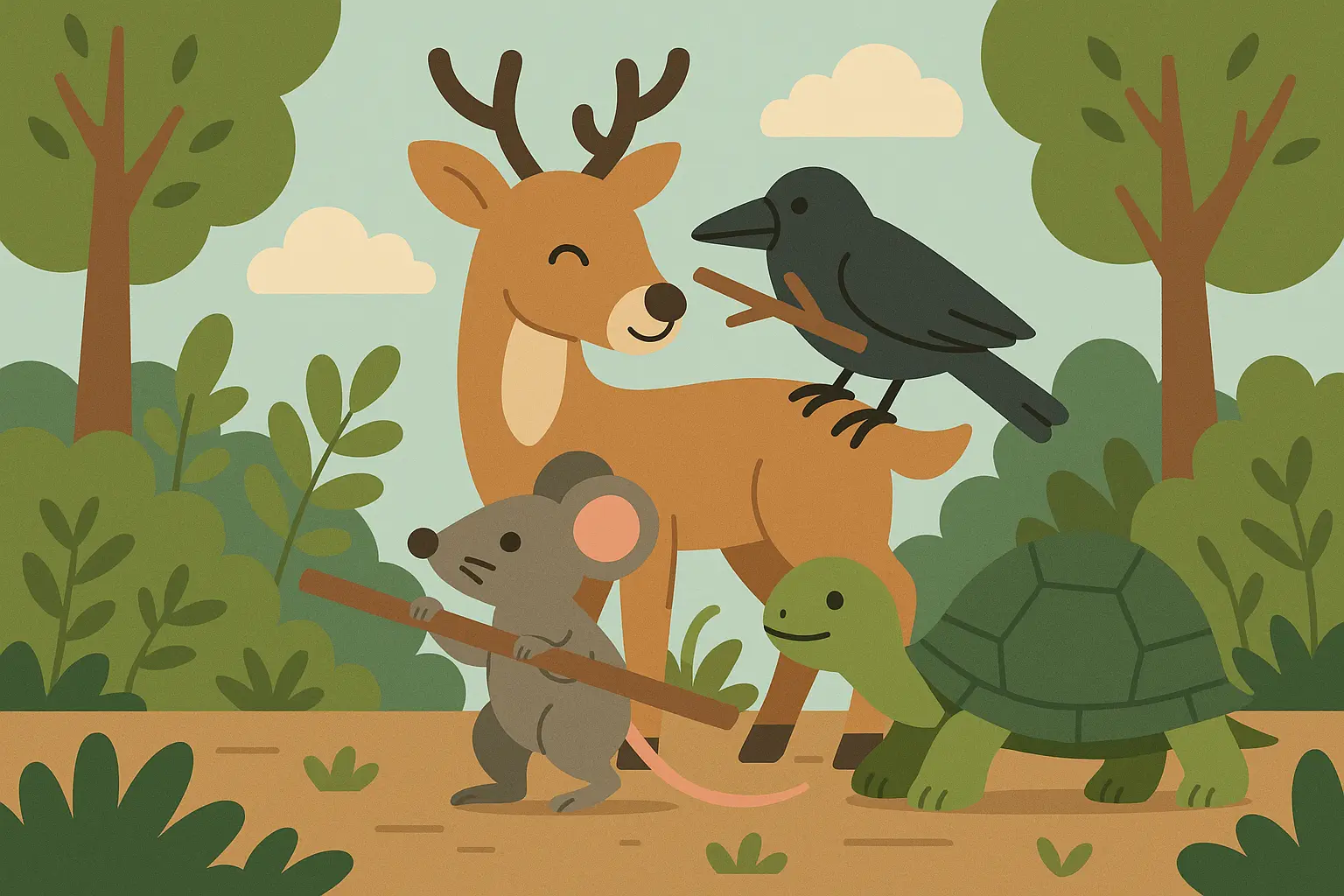
How to Actually Use These Stories Without Sounding Preachy
The biggest mistake parents make is turning these stories into lectures. Here’s what actually works, based on trial and error with real kids who have zero patience for being preached at.
The Car Ride Method
Keep 2-3 short stories memorized for spontaneous teaching opportunities. Car rides are perfect because kids can’t escape, but they’re also relaxed and more open to conversation. When your child mentions a friendship conflict, you can immediately reference “The Monkey and the Crocodile” to discuss trust and betrayal.
The key is making it feel like a conversation, not a lesson. “Oh, that reminds me of this story about a monkey…” works better than “Let me tell you a story that will teach you about friendship.”
The Natural Consequences Approach
Don’t explain the moral—let the story do the work. After telling “The Greedy Dog,” resist the urge to say “So you see, being greedy is bad.” Instead, ask “What do you think about what happened to the dog?” Let them draw their own conclusions.
Kids are smart. They’ll get it without you spelling it out, and they’ll remember it better because they figured it out themselves.
Family Discussion Time That Doesn’t Suck
Dinner conversations and bedtime chats provide perfect opportunities to connect weekly events to story lessons, but only if it feels natural. “Remember the ant and grasshopper when you’re deciding whether to do homework now or play video games first” works because it’s quick and relevant.
Avoid lengthy moral discussions that feel forced. The best conversations happen organically when kids make connections themselves.
What Not to Do (Learn from My Mistakes)
Don’t use stories as punishment. “Well, you’re just like that greedy dog!” will make your child hate both you and the story. Don’t force discussions when kids aren’t in the mood. Sometimes a story is just a story, and that’s okay.
Don’t expect immediate behavior changes. These stories plant seeds—they don’t perform miracles. Your kid isn’t going to transform into a perfect little angel after one tale.
Making Ancient Stories Work in a Digital World
Let’s be real—your kid probably wants to watch these stories on YouTube anyway. That’s fine! The magic happens in the conversation afterward, not during the screen time.
Technology That Actually Helps
Interactive storytelling apps can enhance the experience if they maintain focus on the moral lessons rather than flashy distractions. Choose-your-own-adventure formats let kids explore different decision paths and see various consequences play out.
The best digital adaptations add interactive elements that help children connect more deeply with the lessons while maintaining the narrative integrity that makes these stories timeless.
Creative Projects That Stick
Kids remember stories better when they actively engage with them. Digital illustration projects, podcast creation, and video storytelling competitions encourage deeper thinking about character motivation and moral implications.
My daughter’s class created their own Panchatantra-style stories using modern characters and situations. A story about a student who kept borrowing pencils without returning them taught the same lesson as “The Mice That Ate Iron” but felt completely relevant to their daily experience.
Screen Time That Actually Teaches
If you’re going to use screens, make them interactive. Apps that pause for discussion questions, digital storytelling tools that let kids create their own moral tales, and platforms where children can share their interpretations all work better than passive watching.
The goal is using technology to amplify the stories’ impact rather than replace the human connection that makes these lessons stick.
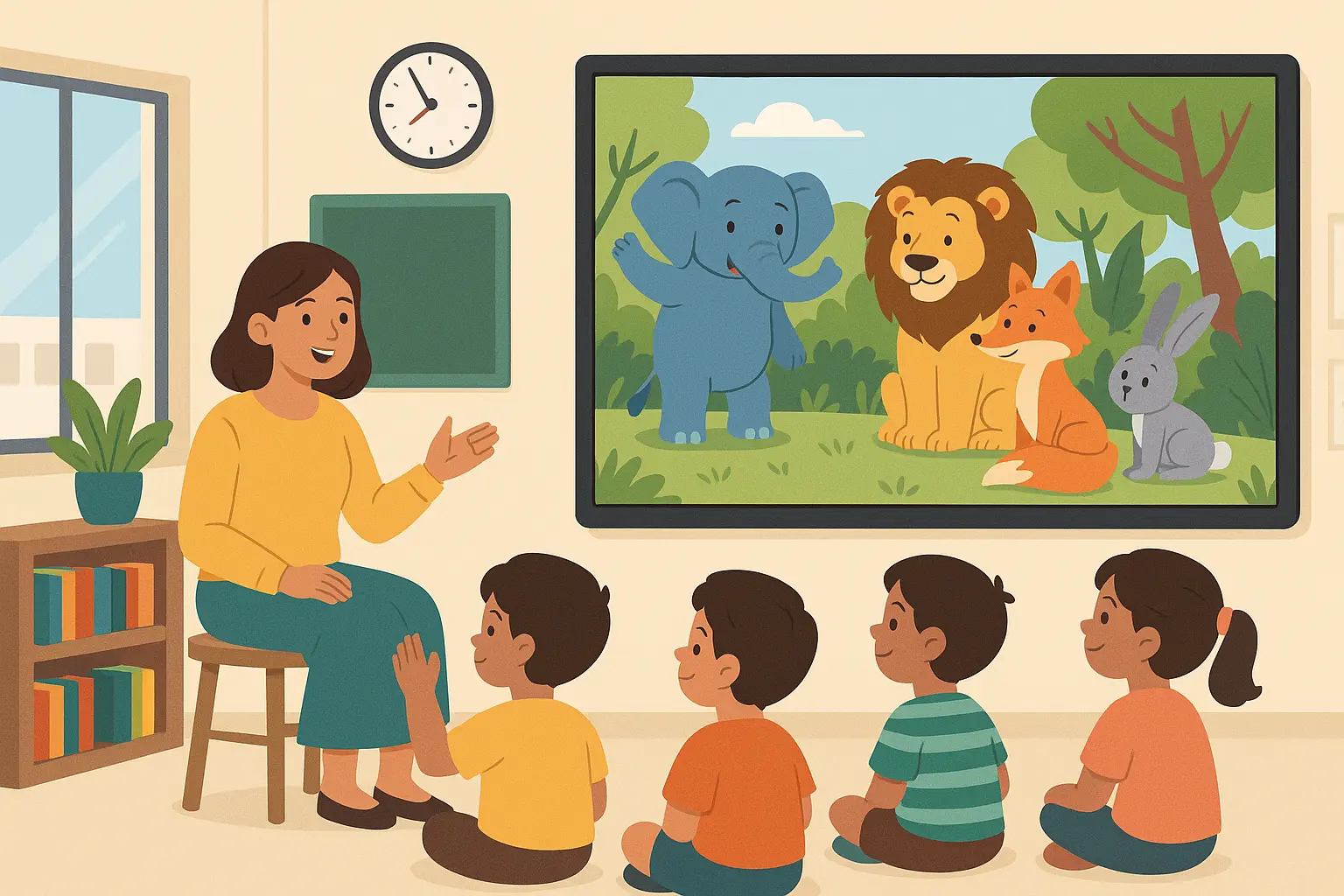
Real Talk: What Nobody Tells You About Using These Stories
Before you dive in, here are the things nobody mentions in the parenting books:
Some kids will ask impossible questions. “But why didn’t the monkey just swim?” You don’t always have good answers, and that’s okay. “That’s a great question—what do you think?” works better than making something up.
Your child might root for the “bad guy” sometimes. This is totally normal. Some kids identify with the crocodile’s family pressure or understand why the grasshopper wanted to have fun. Use it as a discussion starter, not a correction opportunity.
Don’t expect immediate behavior changes. These stories plant seeds that grow over time. Maybe your kid won’t remember the exact story, but they might hesitate before grabbing their sibling’s toy because something in the back of their mind whispers about a greedy dog.
If your kid hates a story, move on. There are 24 others to try. Forcing it will backfire spectacularly and make them resistant to all the stories.
Four-year-olds don’t need complex friendship dynamics. Stick to simple cause-and-effect stories until they’re developmentally ready for nuanced social situations.
Some stories are heavy. The snake story might be too intense for sensitive kids. The tortoise falling to his death could traumatize rather than teach. Know your child and adjust accordingly.
Final Thoughts from One Parent to Another
Here’s the thing—your kid isn’t going to transform into a perfect little angel after one story. But maybe, just maybe, the next time they’re about to grab their sibling’s toy, they’ll remember that greedy dog and think twice. And honestly? That’s a win.
These stories have survived 1,500 years because they work. Not because they’re perfect, but because they address the fundamental challenges of being human—wanting what others have, dealing with betrayal, finding courage when you’re scared, and figuring out right from wrong in complicated situations.
I used to dread the “but why?” phase until I discovered these stories do the explaining for me. Some days, you just need a talking animal to convince your kid that sharing is actually a good idea.
The most successful approach combines careful story selection with realistic expectations. Choose tales that match your child’s current challenges, create regular opportunities for natural discussion, and remember that the goal isn’t perfect moral behavior but thoughtful decision-making.
These ancient stories provide frameworks for thinking through choices and understanding consequences. They offer children wisdom traditions that have guided human behavior across cultures and centuries, adapted for modern contexts and challenges.
Whether you’re a parent seeking meaningful bedtime stories or an educator developing character education programs, these Panchatantra tales provide tested wisdom that resonates with children across all backgrounds and experiences. Their power lies in their continued relevance to the fundamental challenges of growing up human.
Let’s be honest—sometimes these ancient animals are smarter than we are as parents. They’ve been helping families navigate the tricky parts of childhood for over a millennium, and they’re not stopping anytime soon. Trust the process, pick stories that fit your kid’s current reality, and remember that the best lessons often come disguised as entertainment.
The magic isn’t in perfect storytelling or flawless moral guidance—it’s in those moments when your child makes a connection between an ancient tale and their modern life, and suddenly everything clicks. Those moments are worth all the trial and error, all the stories that don’t quite land, and all the questions you can’t answer perfectly.
These stories work because they meet kids where they are, not where we think they should be. And in a world full of complicated parenting advice and conflicting guidance, sometimes the simplest approach is the best: tell a good story, ask what they think, and let ancient wisdom do what it’s been doing successfully for centuries.



Add comment